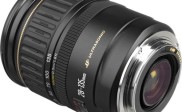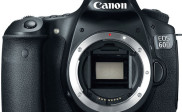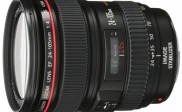A new DSLR from Nikon, the D7000
A few days ago Nikon announced a new DSLR, the D7000. There were a lot of rumors about this new camera and it is a highly anticipated release, as the new D7000 will replace in the near future the D90, one of Nikon’s best selling DSLRs. After Nikon changed its entry-level DSLRs and released the D3000, the D5000 and the D3100 it was time for something else to fill the gap between the entry-level cameras and the pro-level ones. And Nikon D7000 does just that, as it is a mid-level camera and thanks to the new improvements it’s almost as good as Nikon’s pro-level camera, the D300s. Although not a pro-level camera- Nikon places the D7000 in the consumer segment- some features of the D7000, like video recording, are even better than those of the D300s. Since the D7000 is cheaper than the D300s, it will even be considered by those who want an entry pro-level camera, at least until Nikon replaces the D300s with something better.

The Nikon D7000 is a DX format digital-SLR camera equipped with a new CMOS image sensor and with Nikon’s latest image-processing engine, EXPEED 2 that offers superior image quality. The camera’s high resolution sensor offers 16.2 million pixels and enables capture of high-definition images but can also record full HD movies. The improvements are not only inside the camera, but also on the exterior as the new body, although compact like the D90, is now more durable. The top and rear covers of the body are made from a magnesium alloy and thanks to the way the joints have been sealed, it also offers a better protection against water and dust.
The main features of the Nikon D7000 are:
- A High Resolution 16.2 million pixels DX-format CMOS sensor. At this resolution it occupies the second place in Nikon’s lineup, after the D3X, which offers 24 MP. The new EXPEED 2 provides images with extremely detailed rendering, smooth tones and rich colors.
- A dynamic ISO range from 100 to 6400 and expandable to ISO 25,600. This improvement makes it great for shooting in a low light environment.
- High Speed 6 frames per second continuous shooting up to 100 shots. The continuous shooting is not as fast as on the D300s but it’s faster than on the D90 which features 4,5 frames per second.
- An improved 2,016-pixel RGB (3D Color Matrix) sensor. This metering sensor can acquire more accurate information regarding the scene which means that the exposure, focus tracking, white balance, and iTTL flash control are now more optimized.
- A new 39 point AF System which can be customized, including 9 cross-type sensors in the center of the frame. The AF also has a 3D-tracking mode which can accurately acquire and track a subject.
- A 100 % viewfinder, thanks to a new glass pentaprism that has a magnification of factor of approximately 0.94×
- A 3 Inch LCD Monitor with 170 degree viewing. The screen also offers Live View and movie shooting. The Live View function can easily be turned on with a dedicated switch.
- A Virtual Horizon Graphic Indicator that shows whether the camera is level in the viewfinder and in Live View mode. This is great for shooting landscapes or architecture.
- Full 1080p HD Movies with Full Time Autofocus. The movie mode of the D7000 has some great improvements; some inherited from Nikon’s more professional DSLRs. Movies can be recorded at cinematic quality with the following frame rates: 24 fps at 1,920 × 1,080 and at 1,280 × 720, 30 fps at 640 × 424 and at 1,280 × 720. Sound can also be recorded either with a built-in monaural microphone or with an external stereo microphone. Those who would like to use the D7000 to shoot video will be pleased to know that now the maximum recording time has increased to 20 minutes and the video compression used is MOV, H.264/MPEG-4. The new camera also offers movie editing functions and allows its users to save a single frame as a jpg file or to delete certain sections of the movie they recorded.
- Dual Card Slots. This feature offers SD, SDHC and SDXC memory card compatibility.
- A fast start-up time (0.13sec) and a slow shutter lag (50ms). This gives the user a great response time.
- A Compact EN-EL15 Battery that enables the capture of almost 1,050 shots when fully charged.
- Built-in Speedlight flash with i-TTL and Wireless Commander support
- Built-in HDMI Connection. A great connectivity feature as it will allow you to connect the camera directly to a HDTV. This also means that playback will be possible will most of HDTV remotes.
There are a lot of new features and improvements and the list goes on. But, the main advantage of the new camera is its price. The camera’s performance makes it a competitor for the pro-level camera, the D300s which costs 1,700$, and even for Canon’s 7D which costs 1,500$. The price for the Nikon D7000 currently is 1,200$ for body only and 1,500$ for the version with a 18-105mm lens. Although it can be pre-ordered from now, Nikon D7000 will be available in shops on October 29th.
With the new improvements, Nikon D7000 seems to be an awesome camera. It is much more advanced than the D90 and thanks to its price it could be the next best selling camera from Nikon.
Although it isn’t available yet, there are some people who had the opportunity to test the new camera, so you can find pictures and movies taken with the D7000 on the Internet. The most notable test was made by photographer/director Chase Jarvis who was the first to record a movie with the Nikon D7000 camera using 1080HD video and 16 megapixels. He made a short film called Benevolent Mischief for which he used only the D7000. You can see in this film that the D7000 has incredible video quality. Chase Jarvis also used various lenses with the Nikon D7000 to shoot the film and they all seemed to offer great results.
You can also see the great quality of the photographs taken with the D7000 as Chase Jarvis also has a photo gallery made with the new Nikon, on his website. You can also see an image taken at ISO 3200 which has great quality t here. Other sample images can be seen on Nikon’s website, here.




Check it here:
Nikon D7000 16.2MP DX-Format CMOS Digital SLR with 3.0-Inch LCD



